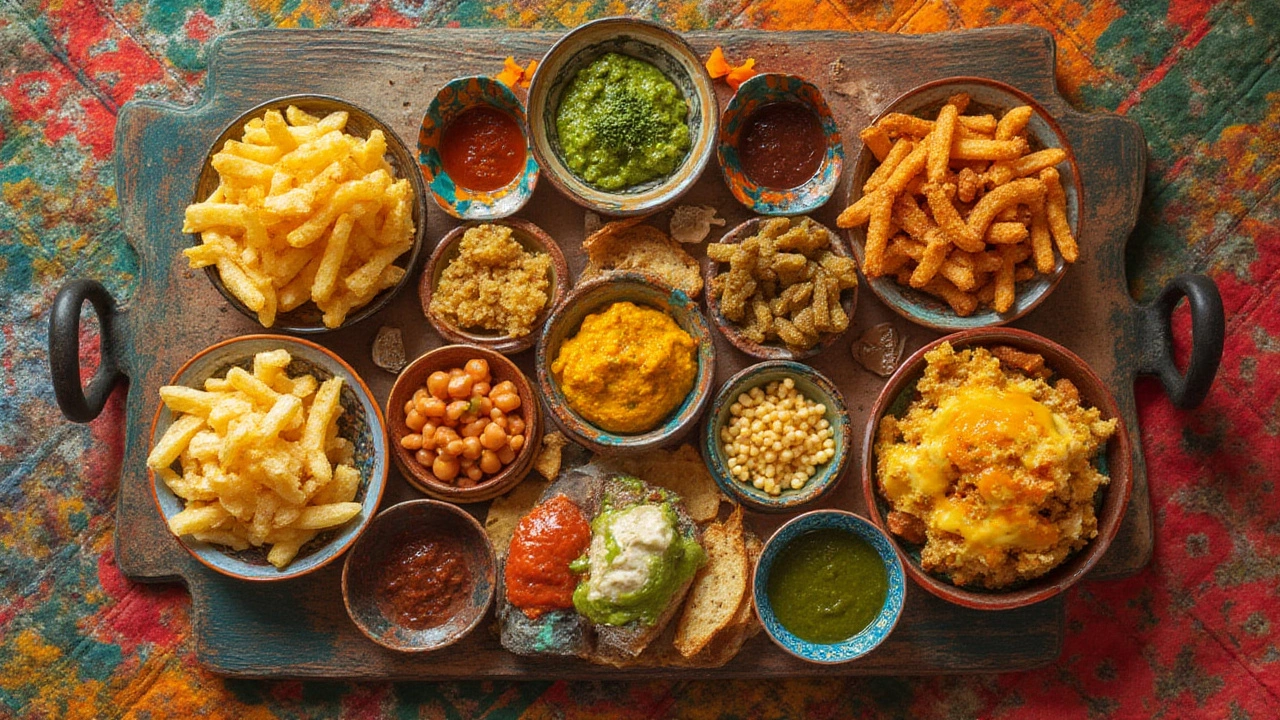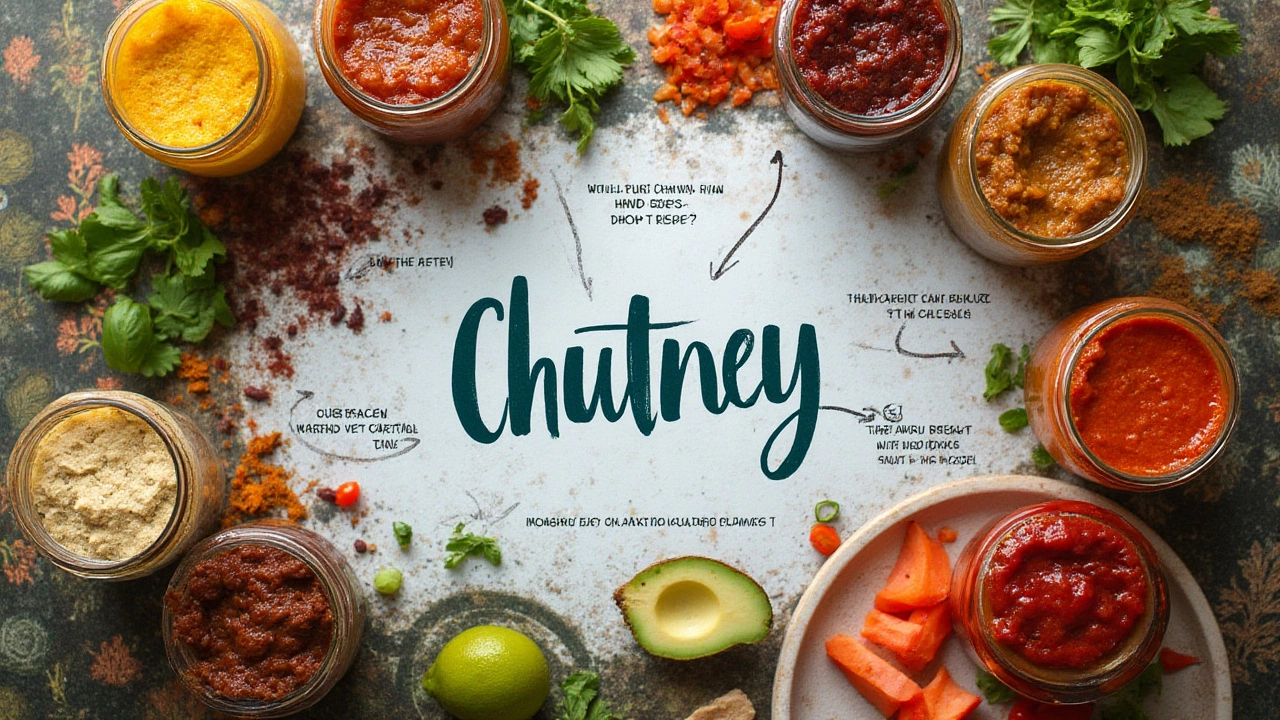If you’ve ever dipped into a jar of chutney and wondered what else it could go with besides the predictable curry, you’re definitely not alone. Chutney is one of those sneaky kitchen stars—it turns up on fancy cheese boards just as easily as it sneaks into a late-night samosa binge, but almost nobody talks about just how versatile it is. Forget being shy; chutney is more than a colorful condiment. It’s a flavor bomb that can lift almost anything from bland to bright, tangy, or even fiery. There’s even a tale of Queen Victoria requesting mango chutney with cold meats at her dinner table. Clearly, chutney deserves a whole lot more glory than just an afterthought on the side.
Why Chutney Works With (Almost) Anything
The genius of chutney? It’s built for balance. It’s the sweet, tart, spicy, tangy, sometimes even funky stuff that can soften heat, add sparkle to rich bites, or just make plain things way more interesting. Originating in India and spread across the globe, chutney isn’t just one set recipe—it’s a whole category of preserved relishes made from fruits, veggies, herbs, and a shocking array of spices. Mango, mint, coconut, tomato, tamarind, coriander—each kind has its own magic. The British loved it so much they carried it off to the rest of the world, tweaking it to fit everything from ham to cheddar to toast.
If you’re wondering what magic makes chutney special, it’s all about contrast. Think about plain rice: meh on its own, but pair with spoonfuls of green coriander chutney or tomato chutney, and suddenly you’ve got life and zing. The scientists over at the University of Copenhagen claim that humans are hard-wired to enjoy dishes that combine different tastes and textures. That’s why, for centuries, Indian cooks have served sweet chutneys with spicy dishes, letting the flavors pop against each other. A sharp or bright chutney cuts through heavy fried food like samosas, acts as a foil for cheeses, and even mellows out salted meats. Sometimes, chutney even saves recipes when they go bland—mix a little into a stir-fry or spoon atop a dull salad, and it’s dinner magic.
Some chutneys are cooked down until they’re as rich and thick as jam, while others are blitzed fresh—meaning there’s something for every season, mood, and meal. And unlike ketchup or mustard, chutney plays equally well with hot and cold foods. Its texture can be thick or runny, chunky or smooth. It can be intensely hot, candied-sweet, tart as a lemon, or just straight up herbal freshness. No matter what, it makes your taste buds pay attention.
One famous tip: in Western kitchens, a bit of chutney often replaces relish, cranberry sauce, or even barbecue sauce. You’ll see it on pub menus alongside cold cuts, roast meats, or ploughman’s lunches. Meanwhile, in Indian homes, you’ll find it next to everything from dosas and idlis to besan chilla and stuffed parathas. It’s the one thing that could pull together sweet coconut, zesty lime, fresh mint, and fiery chilis on the same plate and somehow not start a war.

Chutney Pairing Ideas: Go Beyond Samosas
It’s easy to fall into the rut of serving chutney just with samosas, pakoras, or curry. But if you keep that jar in the back of the fridge for just those moments, you’re missing out. Chutney is crazy versatile and can join your meals at breakfast, lunch, dinner, or as a snack—seriously, some Indian grandmothers even stir it into yogurt for a midnight treat.
Here’s your go-to cheat sheet for what to eat with chutney:
- Chutney pairings with Indian fare: Try mint chutney with tandoori chicken, coconut chutney with rice idlis, tamarind-date chutney over chaat, or coriander chutney layered inside kathi rolls. Many South Indians eat dosa with coconut and tomato chutneys, never with ketchup or salsa.
- Savory breakfast: Add mango chutney to toast with sharp cheddar, or spread mint chutney on an omelet wrap. A bit of tomato chutney stirred into scrambled eggs offers a big flavor upgrade.
- Snacks & sandwiches: Chutney goes gorgeously in classic British cheese sandwiches, or alongside a simple grilled cheese. Dip crackers and tortilla chips into chutney for a sweet-tart twist instead of salsa. Even use it to top burgers or hot dogs—seriously, it works.
- Rice & grains: Swirl spicy or herby chutney into basic rice to instantly boost flavor. Leftover cold rice? Mix in some chutney, maybe a chopped boiled egg, and that’s lunch.
- Wraps & rolls: Layer chutney in wraps with roasted vegetables, chicken, or paneer for a real kick. It adds moisture and a burst of interest, especially if you’re packing lunch to go.
- Cheese boards: A spoonful of fruit chutney paired with aged cheddar, brie, or gouda makes even a sad cheese platter look fancy. For British-style ploughman's lunch, chutney is essential. According to the legendary cheesemonger Neal's Yard Dairy, "No strong cheddar should be without chutney."
- Roasted & grilled meats: Tangy chutney tames the richness of pork chops, slap it on grilled chicken, or serve like cranberry sauce with roast turkey. Mango chutney with lamb kebabs is an absolute winner.
- Salads: Drizzle or stir apple, mint, or tomato chutney through grain salads or slaws for brightness. Even leftover potato salad perks up with a spoonful blended in.
- Naan, pita, or crackers: Scoop a little chutney into every bite, just like salsa, or use it as a spread on flatbreads or pita sandwiches.
I once met an Indian chef at a Mumbai train station who claimed that there are more types of Indian chutney than there are English cheeses. It sounds wild until you see the spread at a proper South Indian wedding—from sweet pineapple chutney to fiery red chili chutney, each made just to complement a specific dish. This tradition is so respected that a bland bite is called a “chutney-less mouthful,” and that’s basically an insult.
Got leftovers? Chutney is a secret weapon for jazzing up boring food. Transform plain rotisserie chicken by mixing chunks with mayo and chutney for a killer chicken salad. Spoon mango-chili chutney over roasted veggie tacos, or swirl coconut chutney into butternut squash soup. Even plain boiled potatoes can get a new life tossed with coriander chutney and a hit of lime. You can stir any leftover chutney into plain yogurt for an instant raita swap, adding crunch and freshness at the same time. Leftover rice never needs to be sad again—just add your favorite chutney and a squeeze of lemon.
There’s a popular saying in Bengal: “Begun bhaja without kasundi is like fish without water,” meaning you shouldn’t serve fried eggplant without mustard chutney. These little pairings have become local culinary codes, so part of the fun is making your own.

Tips for Buying, Making, and Storing Chutney
Shopping for chutney at a regular grocery store? Look for options with real, whole ingredients listed upfront (think mango, sugar, vinegar, spices) versus a bunch of chemicals and sweeteners. If you’re near an Indian market, you’ll find more traditional chutneys—coriander, mint, coconut, lime pickle, tamarind, or tomato—sometimes freshly made, sometimes jarred. In a pinch, even mainstream mango chutney will liven up grilled meats or cheese sandwiches. Pro-tip: Avoid any jar that looks dusty or is sticking to the shelf—chutney loses its punch over time.
Making your own chutney? Get creative. You don’t even need a strict recipe—just something sweet (mango, apples, pineapple, dates), something sour (vinegar, tamarind, citrus), a bit of heat (chili, ginger, mustard), and whatever spices you love. In fact, homemade chutney lets you control the sugar and spice levels, which is great if you want some real heat or prefer gentle flavor. Plenty of cooks add extras like toasted nuts, fresh herbs, or dried fruit for texture and surprise. One thing every experienced Indian home cook will tell you: fresh chutneys are at their best the day they’re made, while cooked chutneys age like fine wine.
Storing chutney is easy if you stick to a few basics. Fresh, blitzed chutneys (think mint or coriander) need to live in the refrigerator and last just a few days before losing their color and bite. Cooked, jarred chutneys—like mango or tomato—can often keep for MONTHS, especially if they’re stored in clean, sealed glass and kept cool. To preserve that flavor, always use a clean spoon to scoop it out. And when it gets a crusty bit around the edge or weird fuzz, toss it (don’t risk food poisoning for a condiment).
The world of chutney expands fast once you start experimenting. Sweet mango chutney and creamy goat cheese on crackers? Yes. Fiery green chili chutney on your breakfast burrito? Unforgettable. Tamarind chutney over a crispy potato hash? Hands down, better than ketchup. And there’s a reason food historians and Indian grandmothers alike swear by chutney’s ability to rescue a tired meal. As Indian food writer Madhur Jaffrey once said,
“Chutneys are an invitation to experiment, and an excuse to liven up anything dull.”
Honestly, if you’ve got a jar of chutney and a little imagination, you’re never more than a spoonful away from something special. It’s the kitchen’s friendly shortcut—ready to turn the boring into bold, and every meal into a reason to experiment.
